How to properly prune grapes for harvest
A vine is a liana striving towards the light of the sun, which, according to its natural essence, is capable of stretching many meters in length, if only there is a support for which it could catch on. Under natural conditions, its powerful, sturdy branches climb to the very top of a huge tree, decorating it with ripe bunches of berries that are impossible to reach.
Content:
- How did grape pruning begin?
- Why prune grapes?
- Cutting the grapes correctly
- Simple secrets
- Why does the vine "cry"
- Useful Tips
How did grape pruning begin?
Man has long learned to tame natural forces by interfering with natural processes, to use them for his own purposes. By properly applying the pruning method for young shoots, for example, impressive yield increases are achieved.
As for the pruning of the vine, according to legend, the co-authorship belongs to an ordinary donkey, which once nibbled young shoots, which resulted in an amazingly rich harvest.
The observant growers who supplied wine to the Roman legionaries decided to shorten the untouched branches and received confirmation of their guess: the vine develops more actively and gives a bountiful harvest due to pruning. And they learned how to do it correctly through a lot of trial and error.
Why prune grapes?
Pruning grapes, we turn the vine into a bush, which we shape in such a way that it fits correctly into the space allotted for it. Traditionally, for the vine, several rows of wire are pulled on two-meter supports, so that it is convenient to care for the plant, creating the most favorable conditions for the ripening of bunches grapes, as well as to ensure convenient and high-quality harvesting of the grown crop.
Due to correct and timely pruning, the quantity and quality of berries increases, and their taste characteristics increase. Knowing how to properly prune grapes, a specialist can significantly increase yields. This is just a link in achieving a goal, but it is important.
Cutting the grapes correctly
Many are already busy planting grapesat least in the seeds. The stage of pruning sprouts will come soon. Taking care of the fruit link is a good guarantee of a bountiful harvest. It is in the fruit link that annual shoots are laid:
- replacement knot;
- fruit arrow.
They are located on a two year old horn. The replacement knot should have 2-4 eyes, and the fruit arrow should remain much longer, it should have 5-12 eyes, but possibly more.
Simple secrets
Pruning the shoot is necessary so that it has the opportunity to develop exactly the lower eyes, and already from them good shoots appear. The need for replacement knots comes down to not moving away from the center of the bush. The uppermost shoots, according to the laws of polarity, remain the best. You do not need to remove them, but then the sleeves are significantly lengthened. All shoots on the fruit arrow will elongate if pruned. More precisely, the next placement knot will come from the eye that will go towards the bush.
If in an area where grow grapes, in winter you will have to cover the plantings, then pruning is carried out in the spring, when the buds are just about to swell. If a cold winter is not expected, then for pruning you need to wait until late autumn, after the first leaves fall.The most frost-resistant varieties are pruned first. It is carried out with a secateurs.
Why does the vine "cry"
At the very beginning of March, when the above zero temperature is established, it is time for the active supply of moisture with nutrients up the trunk of the plant from the roots, which work like a pump. During the spring pruning of the vine, juice flows from the wounds inflicted by the pruning shears, which is usually called the grape "weeping". The absence of "tears" indicates insufficiently moist soil.
Significant loss of juice depletes the plant and can destroy it also because the juice flowing from the wound burns the eyes. Each time, you need to cut the twig so that the wounds are facing the inside of the bush, which will help to minimize tissue death. It is necessary to position the cutting convex side of the pruner blade from the side of that part of the shoot that remains so that the wound is even and smooth, and not torn.
Useful Tips
The weaker and thinner the shoot, the shorter it is cut, strong and well-developed branches are left longer, especially during autumn pruning. The winter period can damage the shoots, so you need to leave an adequate supply of healthy eyes.
If you take your time with spring pruning, carrying it out after budding, you can avoid abundant "tears", because the pressure of moisture from the roots is reduced. In addition, healthy, viable kidneys are clearly visible.
Partial thinning of the bush, if necessary, is carried out in the summer, pinching the shoots, embossing and stepson them in order to increase the space inside the bush to provide enough nutrients, sun and air for the ripening bunches.
Autumn pruning is carried out after the foliage has fallen off, when the plant "hides" the nutrients in the rhizome, but you need to have time before the air temperature settles below zero. The remaining vines are laid in the direction of growth, fixed on the ground and covered. Correct pruning of the vine will delight and surprise with a good harvest.




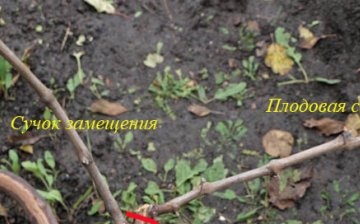
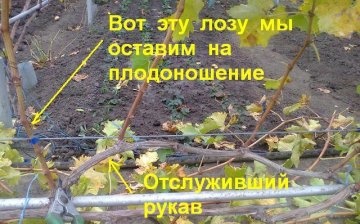
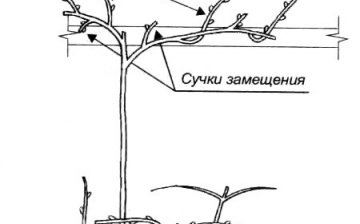




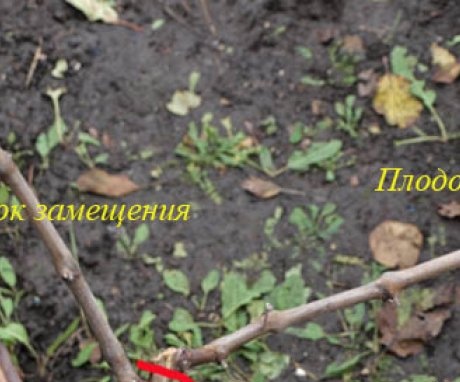

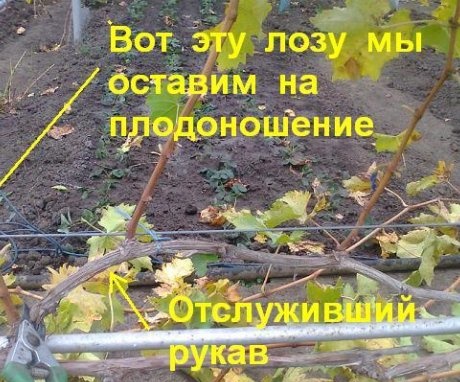
The scariest question for beginners is pruning. After reading your article, I realized that this is not so. I didn’t attach any importance to this before, but last year they planted grapes, my grandmother always said that one should leave three buds on each branch, but a neighbor cuts the grapes at the root, tell me, why are the grapes cut at the root?